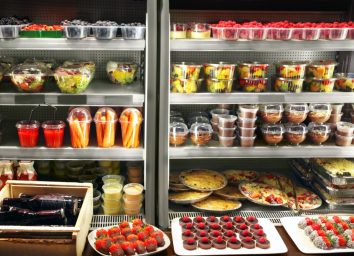6 Recent Changes at the Grocery Store You Need to Know About

We can barely count all the ways the grocery shopping experience has changed this year. From the early days of the pandemic, when certain items were in short supply and strict safety measures were enforced by most retailers, to the most recent changes which are shifting things back to normal but also showing longer-term effects of the pandemic on American consumers, our retail experience is still very much in flux.
We’ve gathered the most important new developments over the last several weeks, so you know what to expect during your next grocery run. And to further prepare yourself for fall and winter, check out 8 Grocery Items That May Soon Be in Short Supply.
There’s a shortage of paper towels again
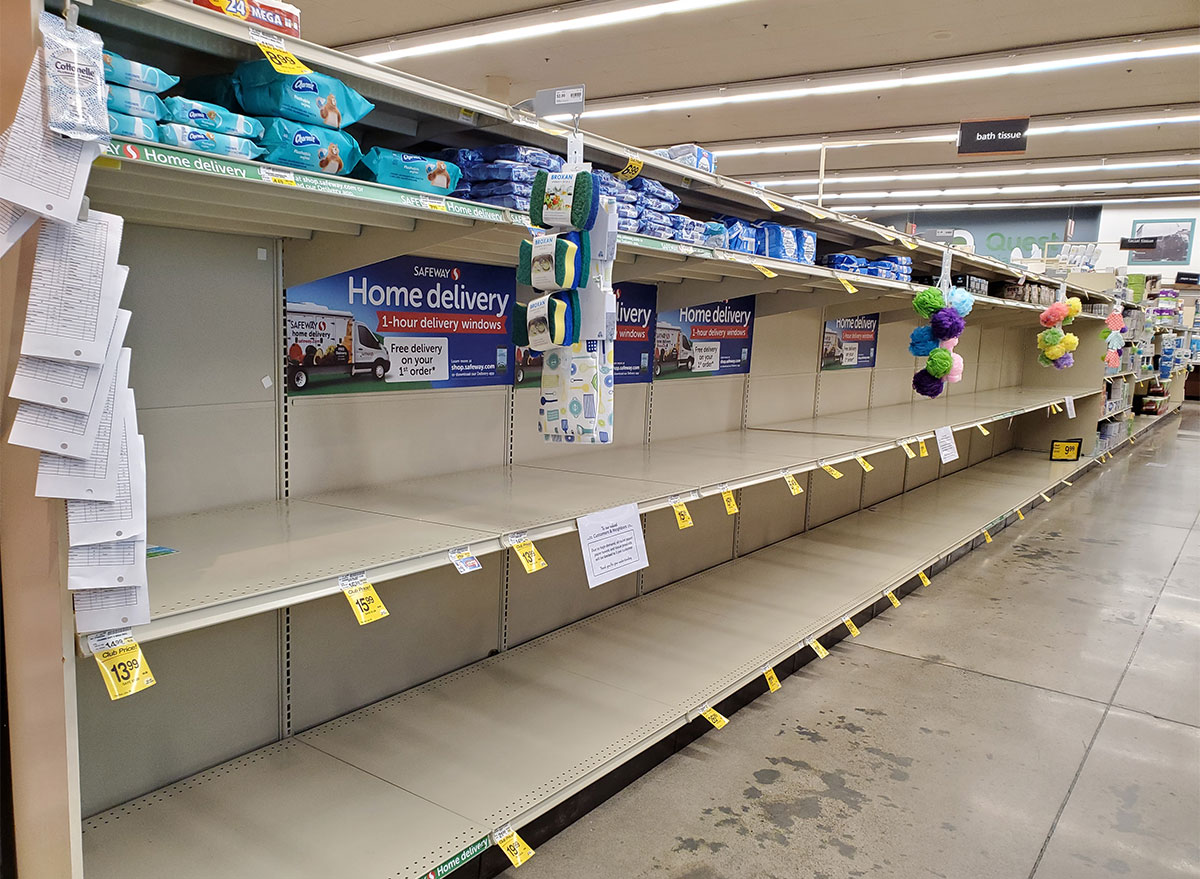
Unfortunately, the pandemic grocery shortages of March and April are quickly coming back to haunt us. Though many of the products that were originally in high demand have been restocked by now, paper towels still remain in short supply. Because of this, some stores may be upcharging for these household hot commodities. When you see them in the grocery store, definitely pick up a roll or two because there’s no telling when they’ll be back in stores with plentiful stock.
RELATED: Sign up for our newsletter to get the latest restaurant news delivered straight to your inbox.
Some meat cuts have gotten cheaper
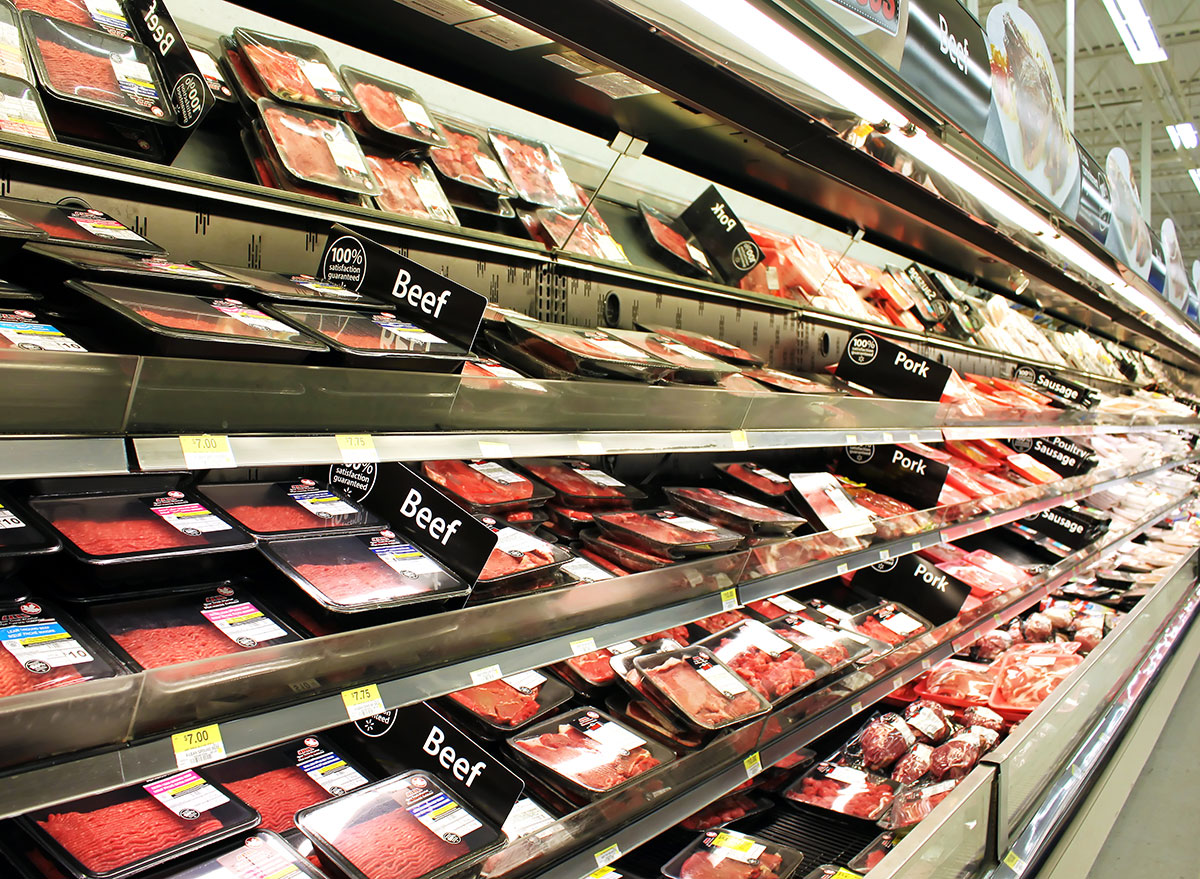
Even though grocery stores were running out of meat in the spring, meat packagers have now been able to get the supply chain back on track. Most grocery stores are now fully stocked because of the increase in production over the past few months coupled with lower restaurant sales due to closures. Some meats are even cheaper now than they were before the pandemic began—so don’t forget to visit the butcher next time you head to the store.
More customers are shopping online

If you decide to visit your local grocer, you may notice that the store isn’t as busy as it used to be. That’s because an increasing number of shoppers have begun skipping the trip to the store altogether. Between the social distancing rules to stay safe, the varying stock supply, and the sheer risk taken in going to the grocery store, many are opting to shop online instead.
Stores are doing away with one-way aisles
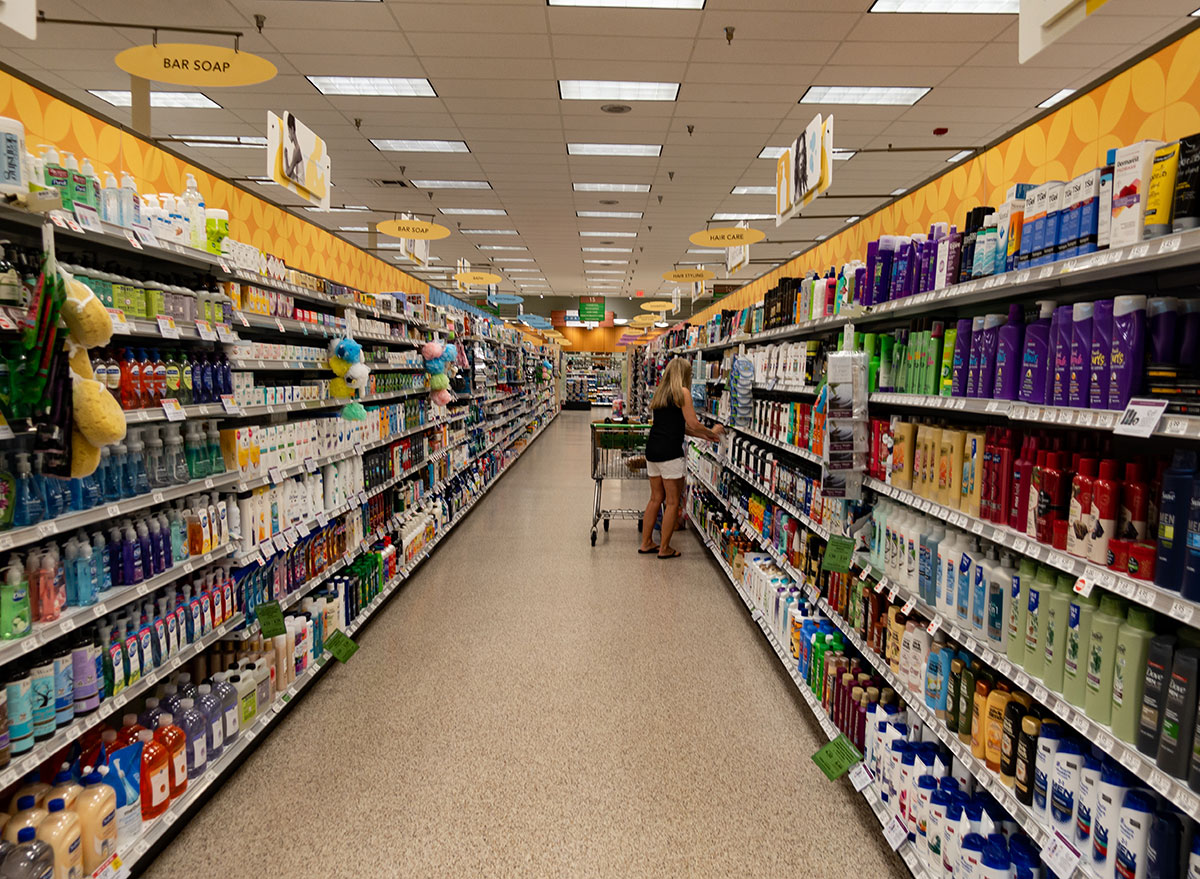
One-way aisles, a form of in-store traffic regulation, were one of the first safety precautions taken by big box retailers during the height of the pandemic. Publix, though, believes that the need for them has come to an end. They are definitely not the most convenient (as you’re forced to walk just in one direction going through each of the aisles), but they allow for fewer people to pass as you go through the store. Unless it’s a state requirement, Publix is removing most of the arrow stickers from the floor to make shopping easier for consumers. Most recently, Walmart has removed this precaution, too.
No more plastic-covered cucumbers
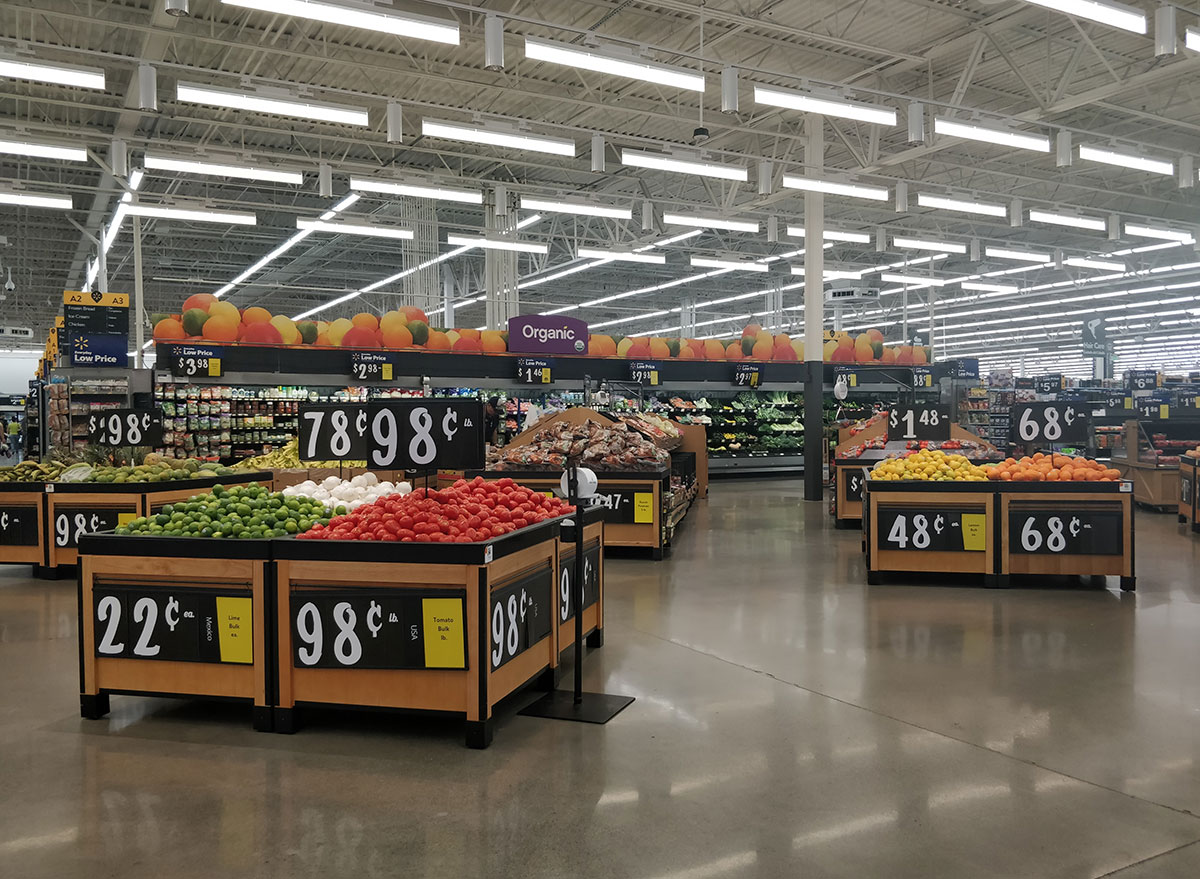
Walmart is working to produce less food waste and be more environmentally conscious, which prompted a decision to stop selling plastic-covered English cucumbers. Given that Walmart supplies almost 25% of America’s fresh produce to consumers, this decision is a big deal. Instead of the plastic-wrapped cukes, Walmart will be selling Apeel cucumbers, which are encased in a protective peel that’s made from plants instead of plastic. Make sure to keep an eye out for these cucumbers next time you’re at your local Walmart—not only are they eco-friendly but they also last longer.
The “ethnic” food aisle is becoming obsolete
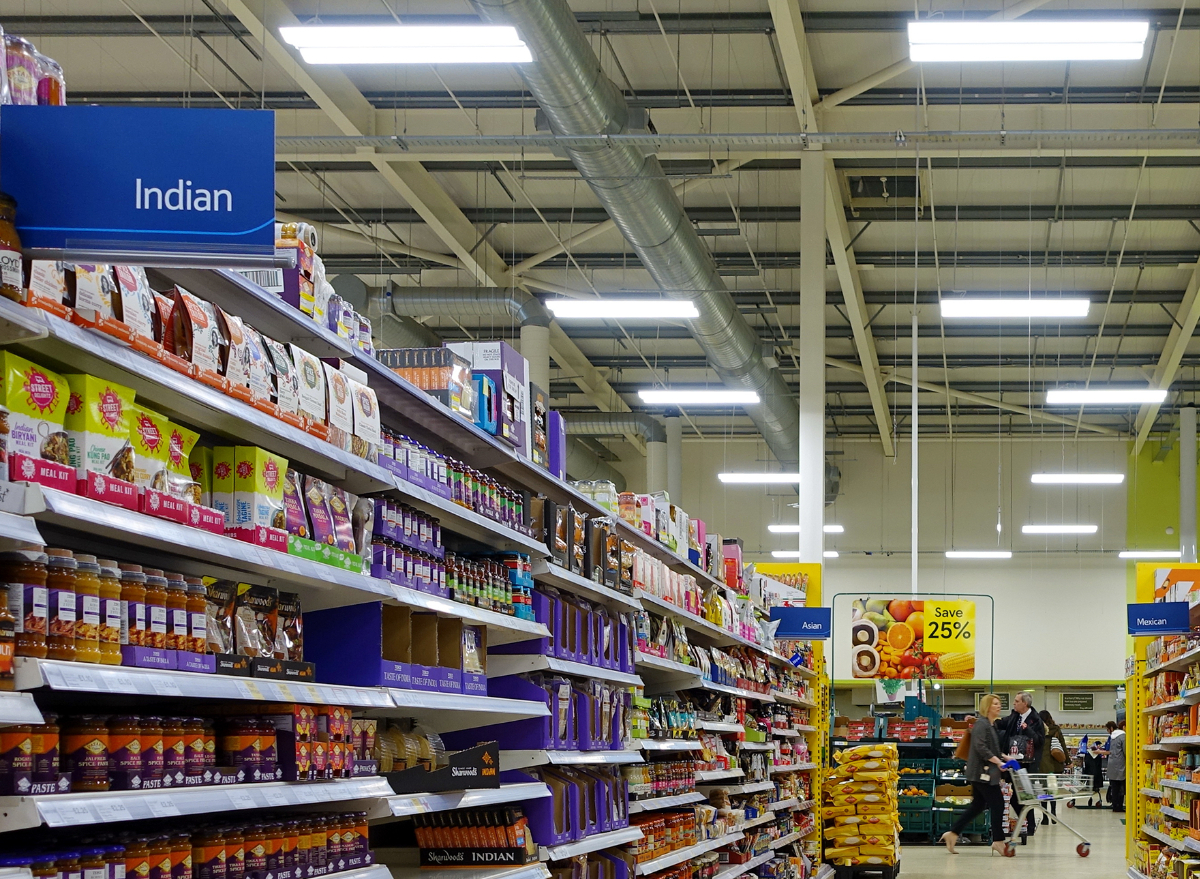
With all the social changes taking place this year, the issue of the “ethic aisle” at the grocery stores has received renewed attention as the one grocery section that hasn’t aged well. Many items that would frequently be placed on these “ethnic” food aisle shelves, like coconut milk or fish sauce, have become largely mainstream in American households, so it doesn’t make sense for them to be separated in this way. Grouping disparate international food items together also highlights the idea that they somehow exist out of the realm of what an American consumer would deem as the norm. Definitely not the best look for grocery stores—it’s outdated and needs to change.
And for more, check out these 108 most popular sodas ranked by how toxic they are.
